
Many people still think of the Maldives as just an ultra-luxurious holiday destination. However, this perception has changed in recent years. Yes, staying at resort islands is not cheap, but if you visit local islands where the locals live, you can keep your budget much more reasonable. In fact this holiday may even be more affordable than a packaged tour in your own country. Today I want to share with you about our visit to two new local islands in the Maldives Alif Atoll: Maalhos and Himandhoo.

There are two main tourism concepts in the Maldives: resort islands and local islands. And there are individual tours by private yachts or ships, but that is a different type of holiday. Until 2011 foreign tourists could only stay at resort islands, which were completely isolated from the local population. Resort islands are private properties that offer high-quality services and privacy, exempt from local regulations. On these islands alcohol consumption and wearing swimsuits everywhere are allowed. This is not the case on local islands. Resorts typically offer private transfer services, which can be by seaplane or speedboat and they are much faster than local ferries or small boats.
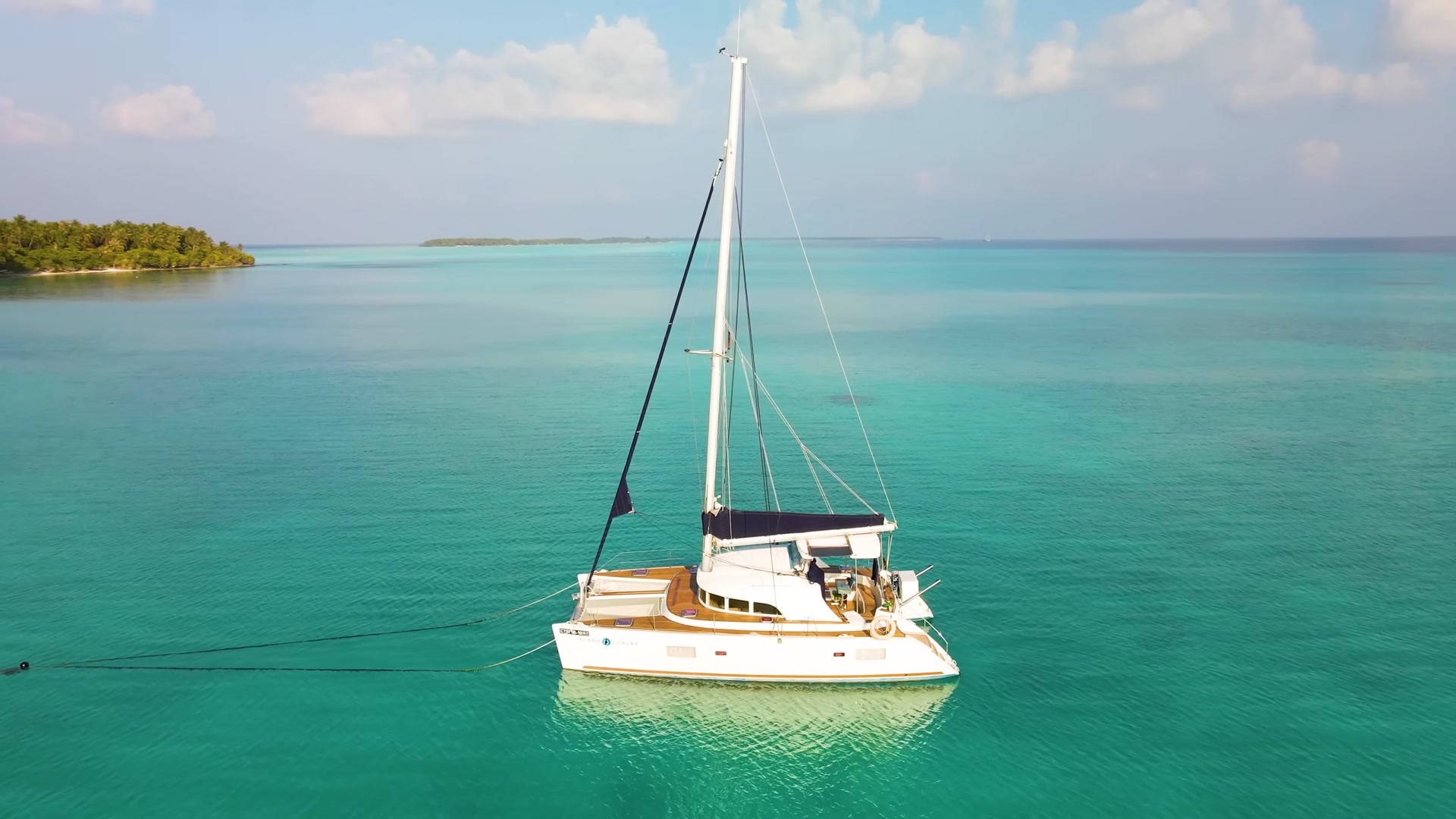
Staying at resort islands is quite expensive. However, for those who want to visit the Maldives on a more affordable budget, it's possible to have a holiday on local islands. These islands have guesthouses, budget-friendly hotels, cafes and restaurants. However, the service level is simpler compared to resorts. Also you need to follow the traditions and rules of the local people.

The Maldives is a Muslim country and female tourists visiting local islands are required to dress accordingly. Clothes that cover the knees and shoulders should be preferred and deep cleavage should be avoided. Transparent covers, swimsuits, shorts, mini skirts and open tops are strictly prohibited. Of course, there are popular islands like Ukulhas or Thoddoo, but respecting the traditions is still a must.

Also the sale and consumption of alcohol are prohibited on local islands. It's not possible to bring your favorite drinks with you, as all alcoholic beverages will be confiscated during airport checks. Of course, there may always be those trying to bypass the system.

The idea of floating bars has emerged in the Maldives. Generally these are small ships a few kilometers off the coast, where you can buy prohibited beverages and enjoy cocktails on the deck. And in the Maldives, the use of all e-cigarettes and vapes is also prohibited. So, if you use a vape, you should not bring it to the Maldives.

The Maldives has a total of about 1200 islands, of which about 200 are inhabited by the local population, 165 are used as resort islands and the others are used for agriculture, fishing, picnics or as nature reserves.

When you arrive in the Maldives, you can be sure that you will relax both mentally and physically during your week ahead. The airport is actually located on a separate artificial island and the capital Malé is located on another island nearby. At the airport we were greeted with a name sign. this doesn't always happen, but if your hotel offers a special greeting service, someone will meet you there. If not, they will greet you with a name sign.

Before coming to the Maldives, the only thing you need to do is fill out a travel declaration. It's nothing difficult, just entering a few details like flight number and hotel name and it takes only a minute. They mostly ask for a QR code, but this time they didn't ask for it. The airport is also very close to a small local airport and seaplane terminal. Everything is very compact and convenient. The transition from the international airport to the seaport is also very easy. This is where all the transfers and ferries begin. We boarded a boat and headed to Maalhos Island.

To understand Alif Atoll, this region consists of island chains that are usually shaped like a circle around a lagoon. There are a total of 26 such atolls in the Maldives. The prices of speedboats can vary depending on the distance to the island. typically, it is around 50-70 dollars per person one way. Boats often stop at other islands to pick up the local people, as they also travel between the islands. Sometimes small ferries, which are quite cheap, are used, but they take a much longer time.
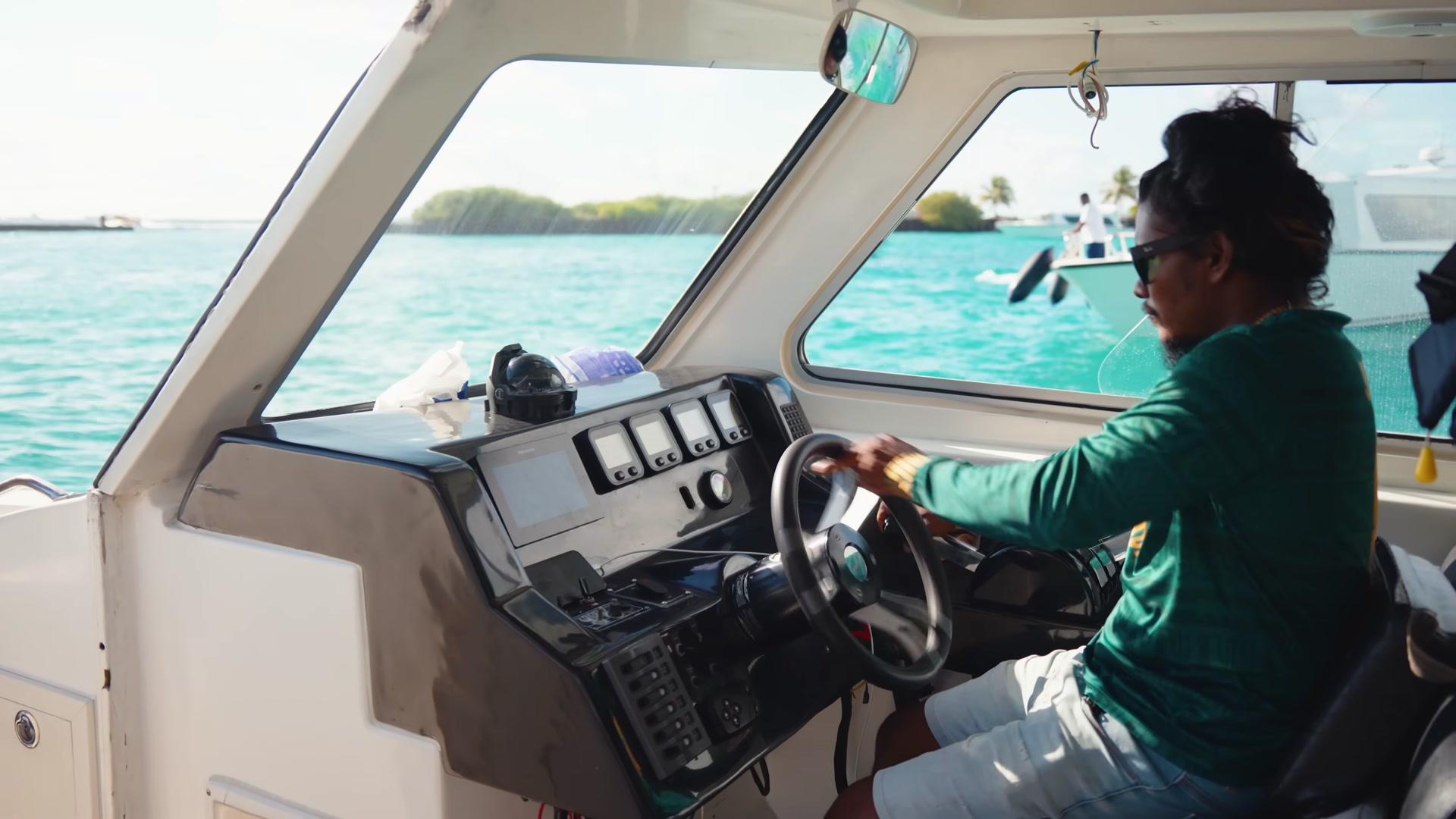
No one could have predicted that there would be such tall buildings here, exactly nine stories. After two hours, we arrived at Maalhos Island. Here AliExpress boats carry packages from other islands and everyone delivers them to each other. We waited for our luggage.

You will make payment for your hotel or tour, but if your card is blocked, don't worry. Local islands vary in size and shape, from large ones to very small ones, from long ones to round ones. On every inhabited island, there is usually a mobile tower, a pier for boats and fishing boats and a mosque. The electricity on the islands is usually provided by diesel generators or solar panels. You don’t need to worry about the noise from power plants, as they are generally built in areas far from the villages.

Thanks to tourism, the number of schools, small hospitals and children's playgrounds on the islands of the Maldives is increasing. Also there are municipal buildings and police stations. If the island is developed, there are usually several shops or cafes and there may even be a good coffee-serving cafe. Many islands have green areas for playing football, but the football fields here are made of synthetic grass.

On every island there is an attempt to establish a pharmacy and drug prices are quite low because the government likely subsidizes this. We needed to buy a few medications and syrups and we paid a total of 5 dollars for all the medications.
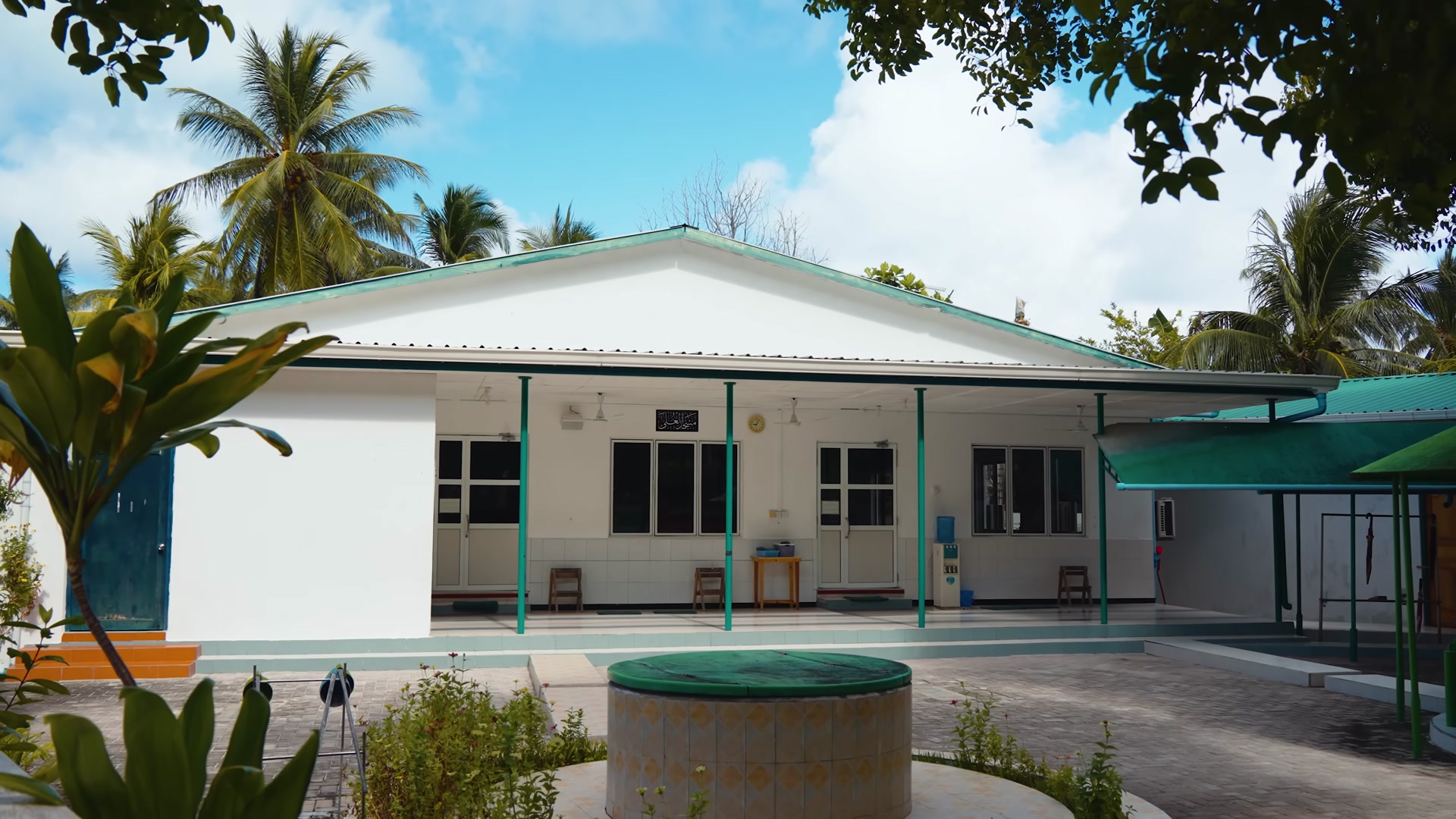
Vacationing on local islands is really nice. With a small budget, we can have such a wonderful holiday, but it should be noted that on islands with permanent residents, there can always be cleanliness issues. While strolling through the village, everyone is cleaning around their garden, throwing out trash, sweeping leaves, so everything is kept clean. However, in areas where fishermen work, where they repair their boats, there might be some lack of cleanliness.

There are vehicles for garbage collection on the local islands. Garbage collectors go into each house's garden to pick up garbage bags. However, the most surprising thing is that some of the collected trash is loaded into nets or containers and thrown into the sea. And some segregated waste is sold to India, but generally, the trash is thrown into the sea.

As for the sewage issue in the Maldives, generally there is a large pipe that extends about 500 meters into the sea, towards the coral reefs and all waste is discharged there. However, recently, modern islands have been installing sewage systems, indicating progress. In fact, since the waste thrown into the sea is organic, local people and fish consume it.
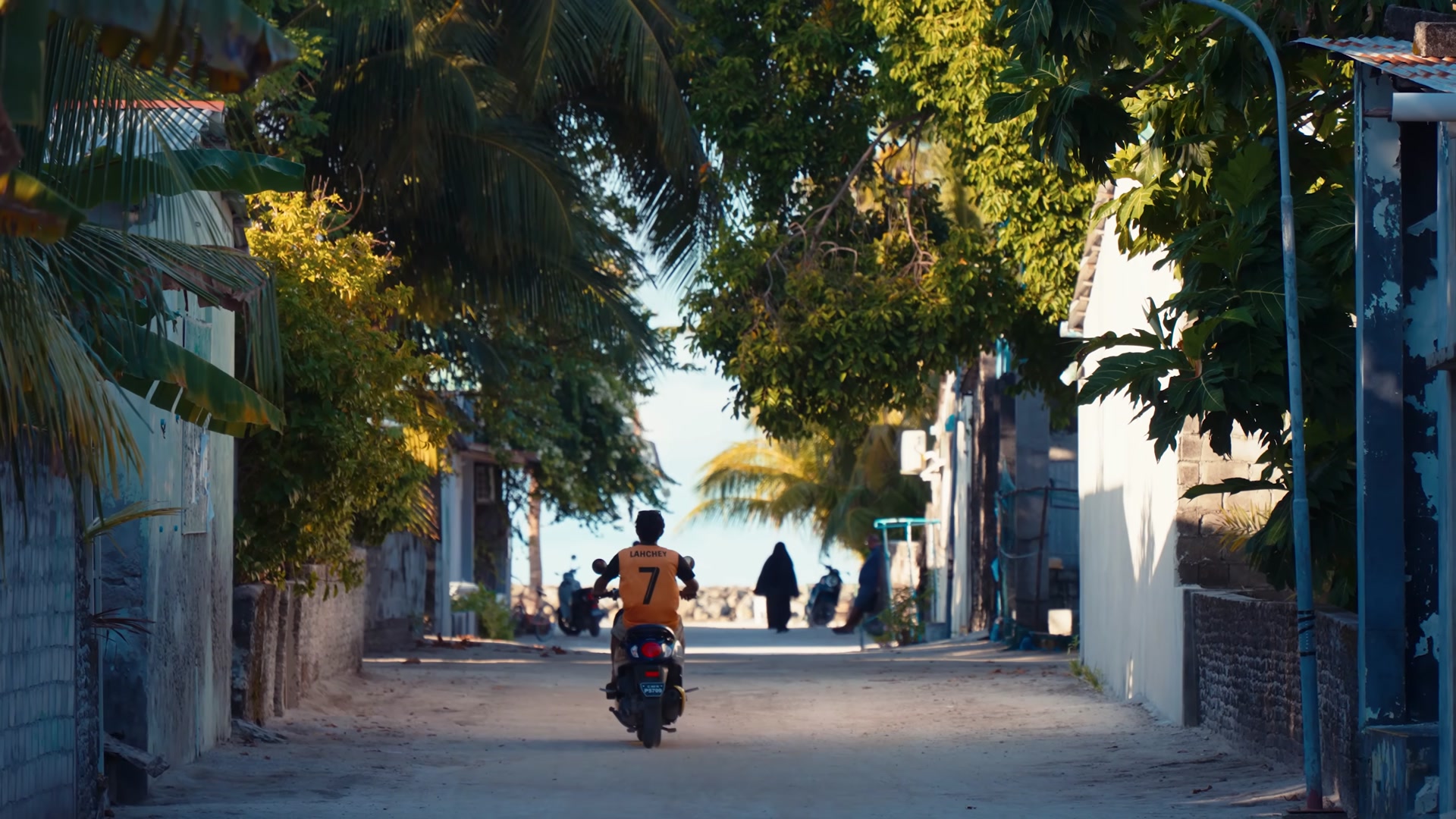
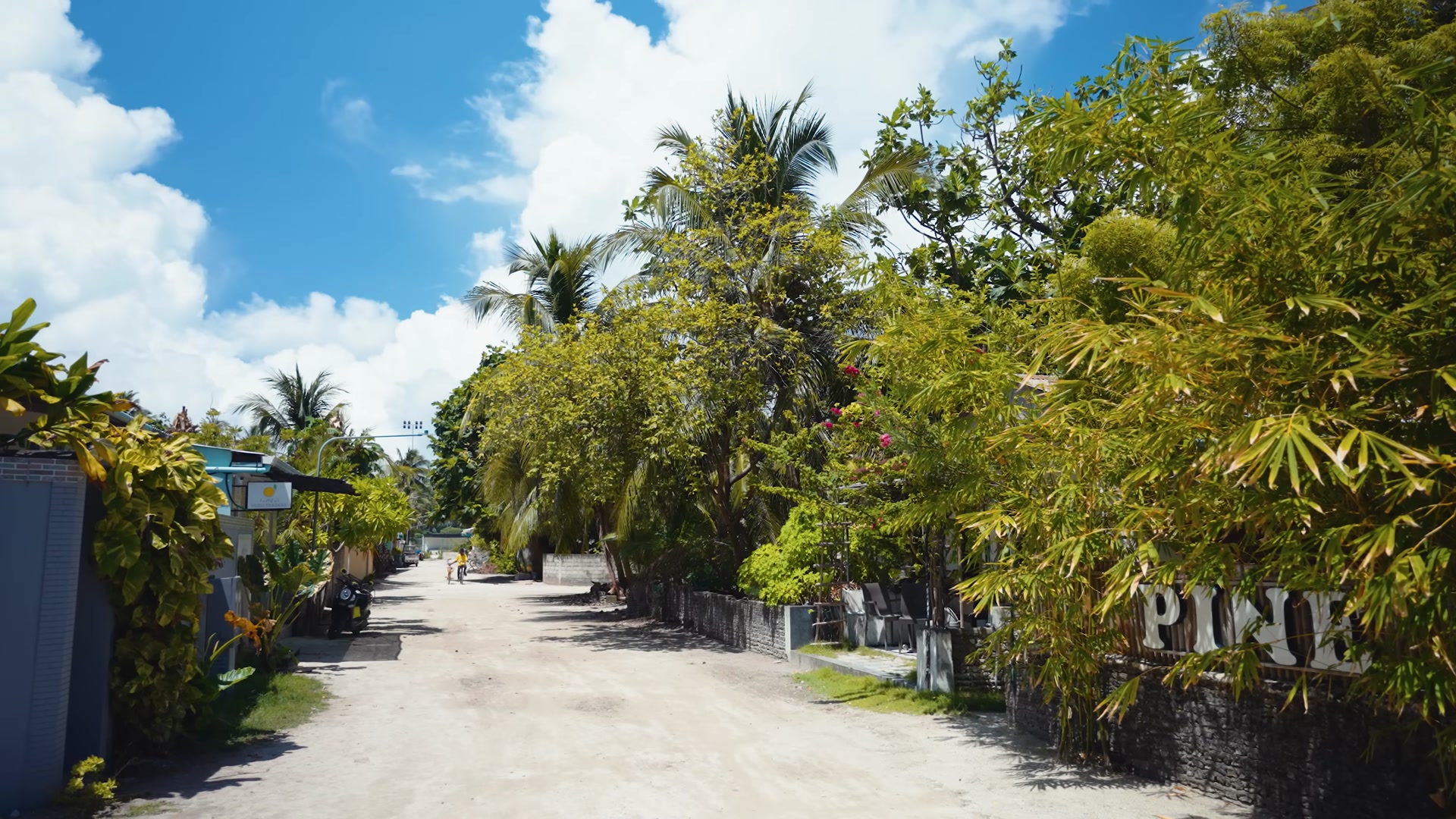
The guesthouse we stayed in on the island was called "Saima Inn" a simple but small place. It had four rooms, but this is different from resorts. In resorts you have villas over the sea or your own private lounge chairs and pools on the beach, while on local islands, there are usually small guesthouses. These guesthouses can be three or four stories or you can live with the locals. The room we stayed in had air conditioning. it’s impossible to live in the Maldives without it. The room had a large bed, wardrobe and refrigerator. There are shops on the island where you can buy food and drinks and we can store them in the fridge.


In the bathroom there was an outdoor tropical shower, which was a nice experience. There was also a normal shower, hot water and everything was very nice, spacious and clean. Although small, it was quite comfortable and functional. The hotel hadn't brought its own chef yet, but someone was expected soon because they had a kitchen.
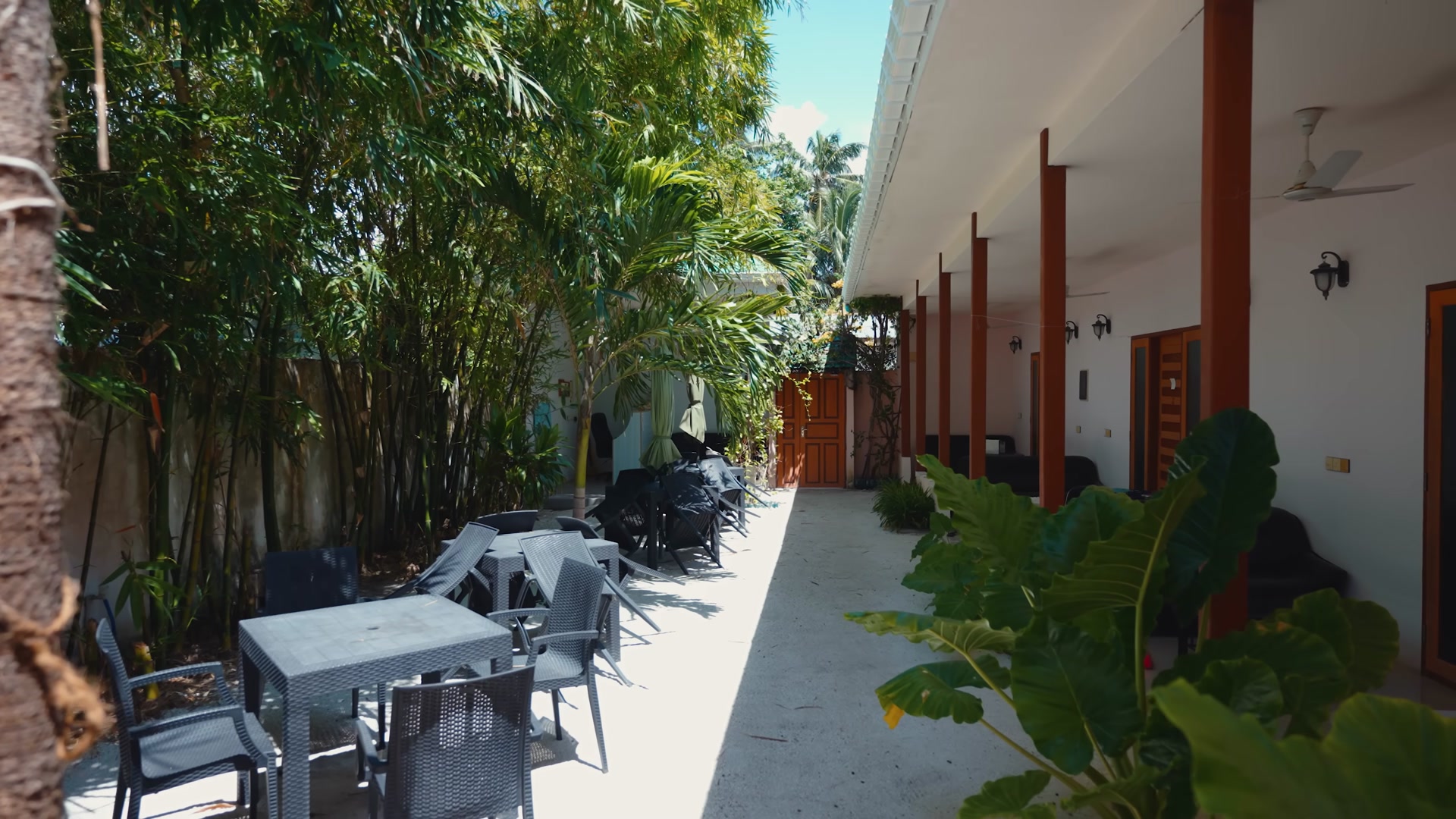

For breakfast, there was one open café. We had two types of breakfast options: a local Maldivian breakfast and a continental breakfast. The continental breakfast included an omelet, two toasts, two sausages, jam, butter, fruit, water and tea or coffee. The temperature was 28 degrees and we hadn’t gotten used to it yet, so it was quite hot and humid.

One of the most important things in the Maldives is the underwater world. It's best to bring your own equipment for snorkeling, but if you're someone who travels a lot, it can be difficult to carry everything.
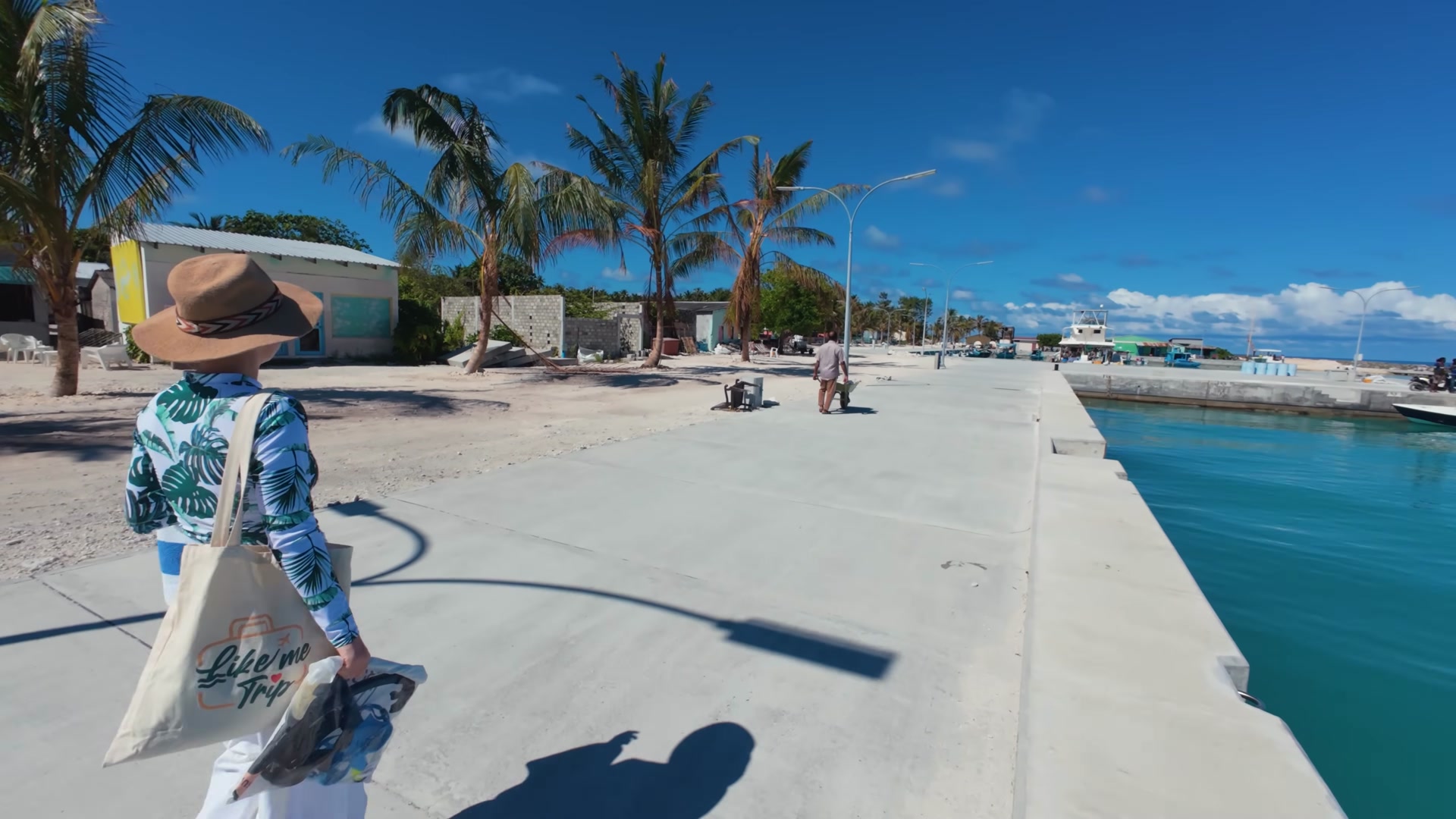
We swam a bit by boat and saw many fish. The underwater views the Maldives offers are amazing. The whales are small and the coral sharks are calmer. We took a 3-4 hour tour and returned to the island by noon.



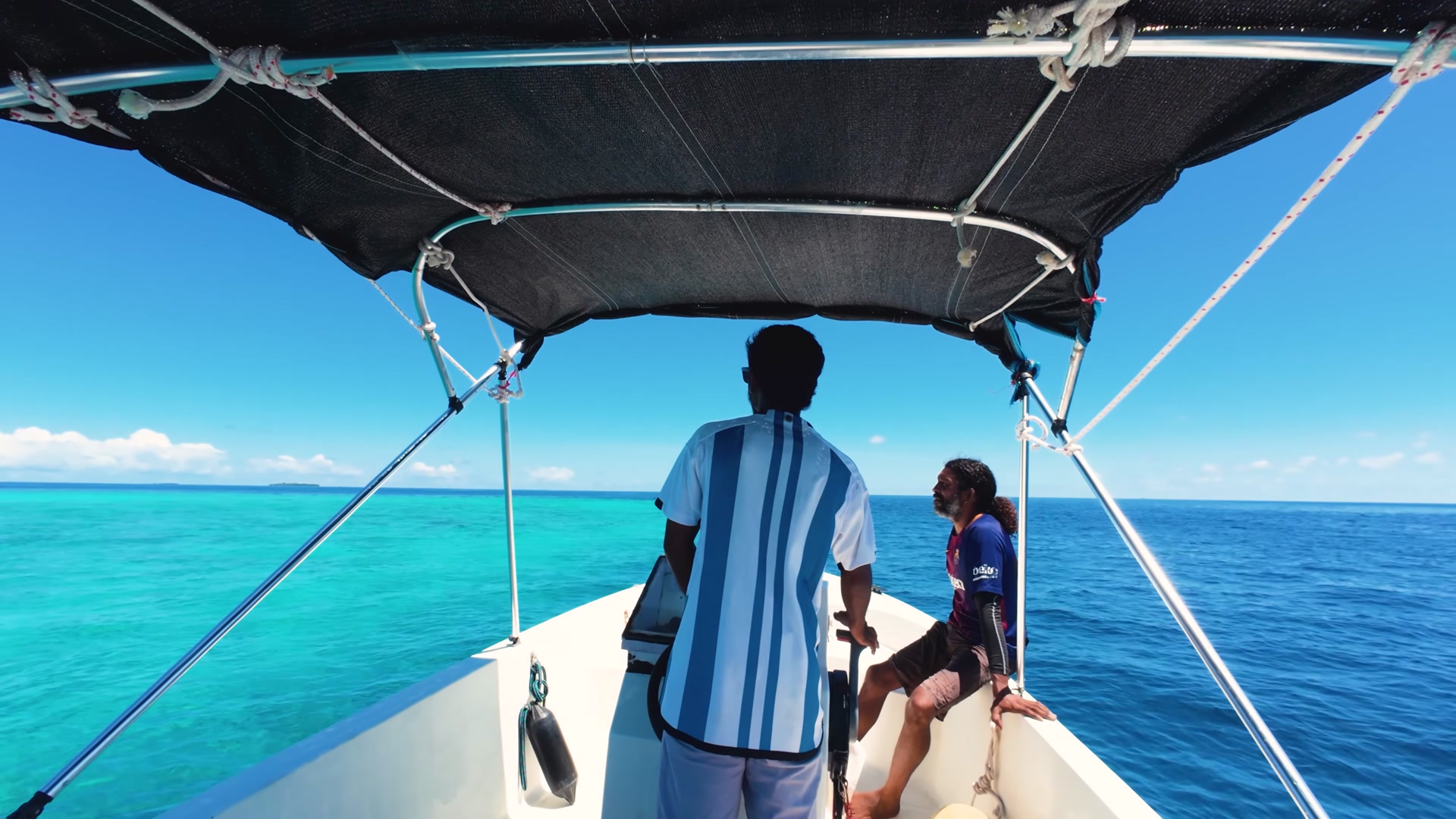
This island is a peaceful place with few tourists. Here, we were completely alone with nature, on an entirely empty beach. There were no lounge chairs on our beach, but our hotel had plenty of them. If you want, you can ask them to bring some. But there are no tourists here, we prefer to be one with nature. Indeed, a local person is enjoying the sea behind us. And we enjoy the beautiful turquoise water. Surrounded by palm trees and the surroundings are very calm, being one with nature is very valuable to us.

We started to enter the sea. there were some coral stones at the entrance, but as we went deeper, the water became calmer. You should be a bit careful here because there is a current, so choosing the right time is important. If tourists want to swim in the sea, I would suggest asking the hotel owner for the best time. Near where we stayed, there is a place called "Coral Garden" where there are beautiful corals and you can swim towards the peninsula from there.

Also when you go swimming in the Maldives, you should not forget to bring high SPF sunscreen for protection from the sun. My preference is usually to use sunscreen for my back and shoulders, because getting sunburned on the first day in the Maldives is not very pleasant.
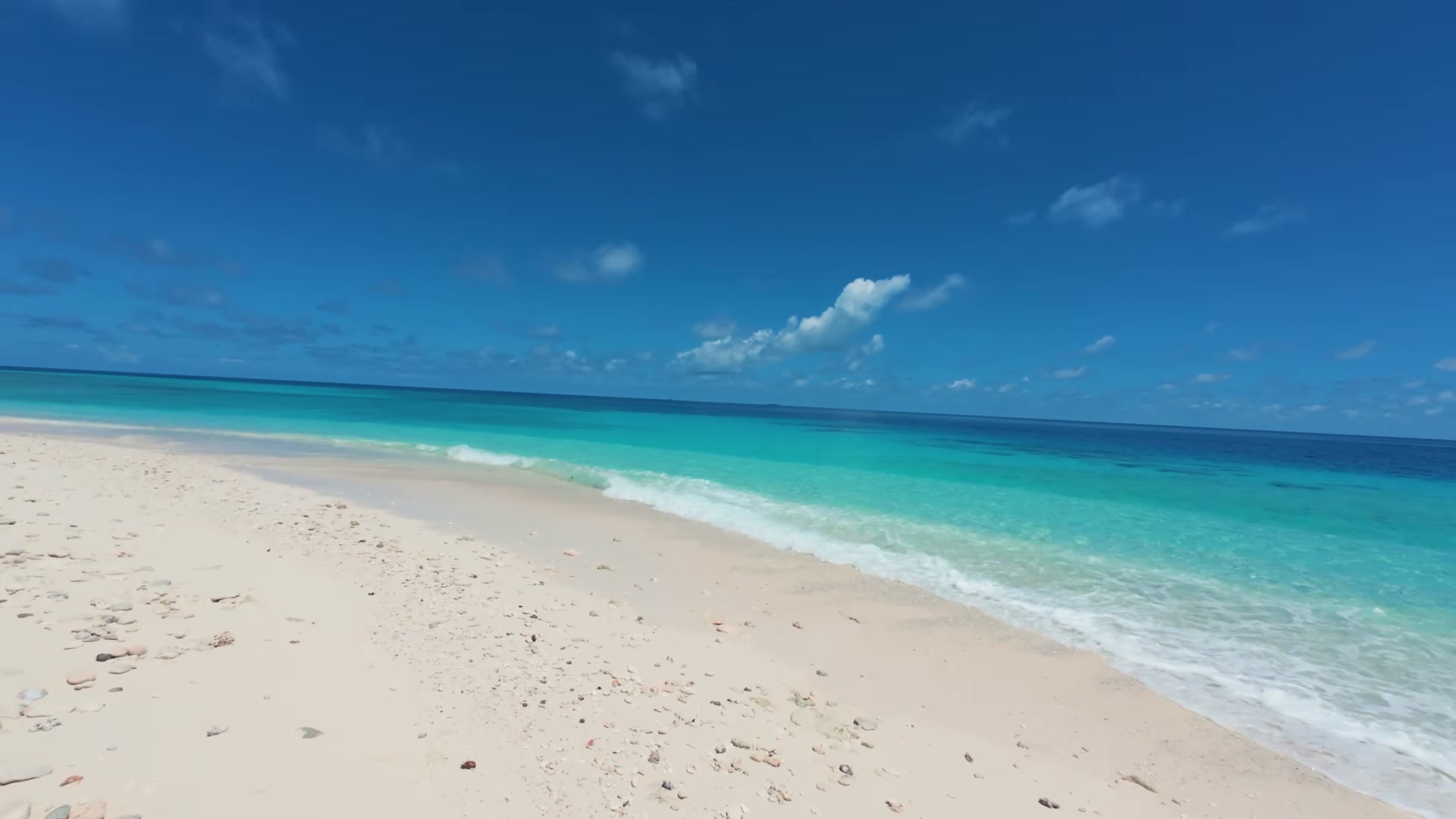
The water temperature in the Maldives is really ideal, the water hugs the body so well that you don’t want to get out. Sometimes the water can be too hot, like in Thailand during the dry season or in Croatia in July when the water can be very cold, but here the water is really relaxing and just perfect.
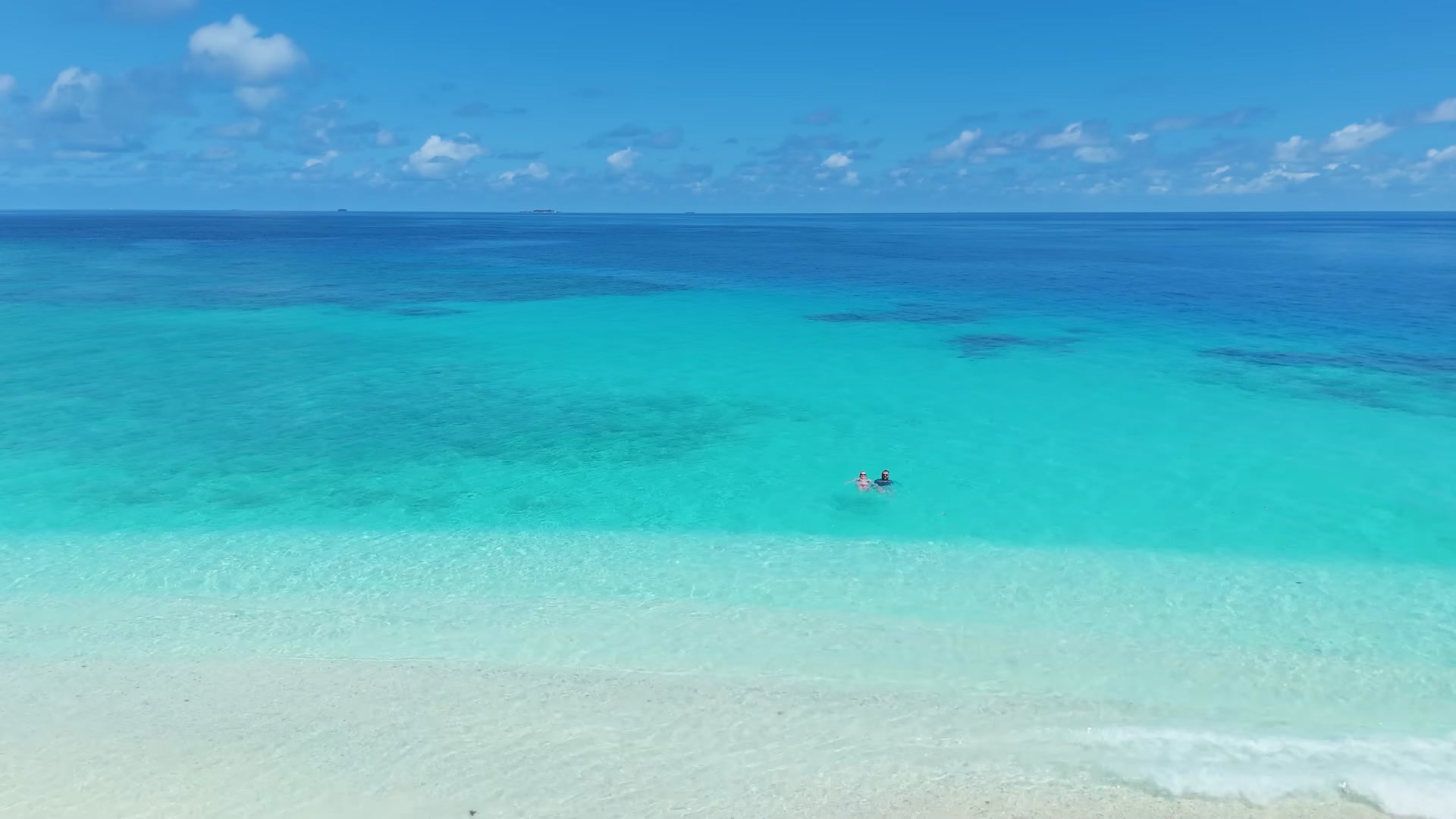
There is also a very interesting phenomenon here: in the Maldives, coral sand can shift according to the season. This causes some of the sand on the beach to move from right to left, exposing coral stones. Therefore your beach might look different.

We organized this trip with "Wild Maldives". The company arranges everything in the Maldives, such as accommodation, transfers, tours and meals. You just fly to Male and they take care of everything else. They also offer accommodation options on local islands and resorts, with everything available according to your preference and budget.

The island we stayed on Maalhos, is quite small and about 400 people live there. There is a school on the island and some students come here from other islands to study. The local people clean up every morning and we observed how the garbage is collected early in the morning. Currently, there is only one restaurant open on the island, so we had all our meals there. Breakfast was delicious and we swim a lot, so we eat a lot. Some people say: "The Maldives is a boring place, I just want to lie down and sunbathe" but if you love the underwater world, the fun never ends here.

Lunch prices are quite reasonable, for example, chicken rice, beef and noodles are about 10-15 Maldivian Rufiyaa. Payments are generally accepted in dollars or euros. Also, fresh vegetables, fruits and chicken are quite affordable. There are only two markets on the island, one large and one small. The small one is more open and you can do a little shopping here. Our lunch was very tasty and we paid about 17 dollars in total for 2 waters and 2 meals.



Beef here costs 995 Maldivian Rufiyaa, which is about 6 dollars. Actually the prices aren’t bad, but usually, only frozen and processed products are available and fresh meat is hard to find. There are various peppers and vegetables, as well as dairy products and fruit juices. Coca-Cola and similar drinks are also available. There are also many canned products. Prices are mostly written down, but not always. Generally, these types of products are found here because they last a long time and can be preserved this way.

If you forgot your shampoo or personal care products, you can find them here. There are also home products, like baby diapers. Also, we wanted to get some snacks with some tea, so we thought of buying cookies and chips. There are various types of coffee, even instant coffee and dry creamers are available. Interestingly, fresh bread is also available, probably from a bakery in Male. Fresh eggs are available, a pack of 10 costs about 2 dollars. Among the fruits, there is watermelon and it costs 1.8 dollars per kilo.

We took a cold coffee and wandered around the island and the coffee producer was from Austria, so we were drinking Austrian coffee in the Maldives. It’s halal certified, which is quite interesting. We paid a total of 5 dollars for the coffee and chocolate. Since there are only two of these shops on the island, the prices can’t be very low. However, since everything here needs to be transported somehow, the prices are a bit higher.

As we continued our island tour, we also looked at the houses and the local way of life. There is a football field on the island, even like a mini stadium. It’s currently being renovated, but most things here are being renovated. The tourist infrastructure on the island is not very developed because this island usually doesn't receive tourists. There are only two hotels and one café here. If you’re looking for a quiet place close to nature, this place is perfect for you. The locals are very friendly, especially the children are very kind.
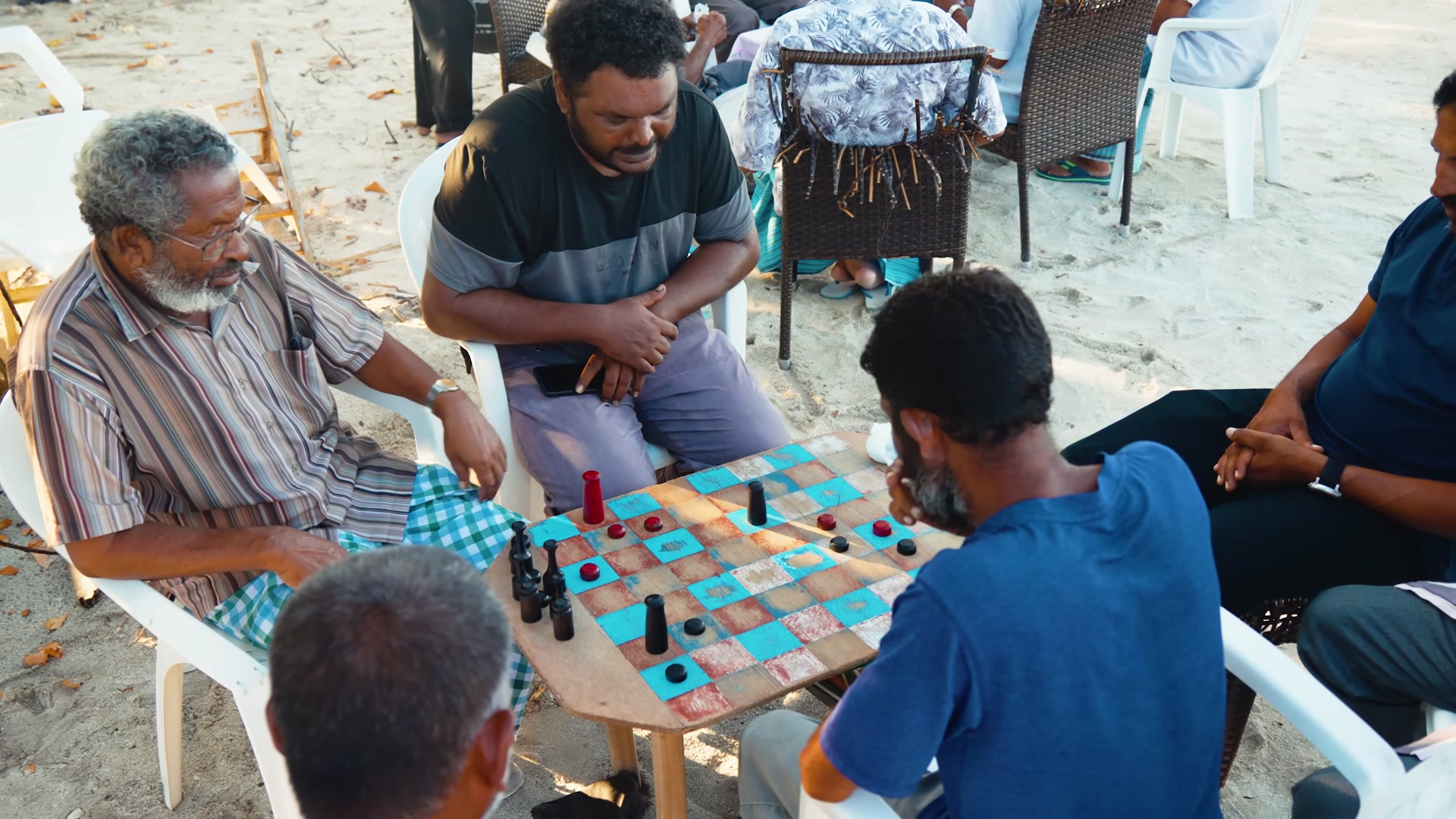
The island is very small, but here, people are riding bikes or scooters. There are no cars on the island, only small three-wheeled vehicles. There is a lot of forest here, but in some areas, the forests have started to be cut down. About half a year ago, there were more palm trees on the island, but now, in some areas, the forest is being cut down. This is happening due to the effects of globalization and tourism.

There are not many mosquitoes on the island, but they do bite, so it’s important to bring mosquito repellent. We use the repellent we brought and it really helps. We went to another island near sunset. these areas don’t look much like the Maldives, they have more of a Bali vibe. The beach here is a bit different, but in places where everything is beautiful, it's important to pay attention to the sea level, because sometimes the tide starts and you might face problems on the beach.






299.jpg (https://images.hive.blog/DQmNvNDrtUnzSnpSJ3P3CZ7S95eAt533hEv6TGg1rmVmZk8/299.jpg)
311.jpg (https://images.hive.blog/DQmQYMYe5ENb6CDsLtqYuAVYqF3gdmcj4dVCMGsbtb67Goe/311.jpg)
320.jpg (https://images.hive.blog/DQmdvpKurWYuQo4YU1s4rXKYh2PzQnAh6Avdg8iqQdhMMLT/320.jpg)
357.jpg (https://images.hive.blog/DQmdJabC2XQNmcabBReGxttJJjJn1Gcd3ngUZSZpXDrhXSB/357.jpg)
Yesterday on the boat, we decided it was bet